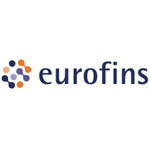Accelerate your COVID-19 bioanalytical research while saving time and reducing cost

ON DEMAND
The pharmaceutical industry is in a race to treat and prevent COVID-19 from impacting more human lives. This has led to many alternative approaches, but regulated Bioanalytical is not an area where short cuts should be taken. We will discuss current approaches available for therapeutic and vaccine Bioanalytical assessments and regulatory requirements in clinical research.
As an alternative to the current gold standard of conventional virus neutralization tests, we will highlight a simple and rapid validated SARS-CoV-2 surrogate virus neutralization test (sVNT) that is amenable to high-throughput testing and/or fully automated by detecting total immunodominant neutralizing antibodies that can be rapidly conducted without requiring a biosafety level 3 containment.
Learning Objectives:
Review current approaches available for therapeutic and vaccine assessments including COVID-19 bioanalytical analysis
Learn how utilizing an alternative approach to Nab testing analysis can advance your research by saving you time and money
Discuss regulatory impacts of emerging research, technology and how to accelerate your clinical trial program
Who Should Attend:
Scientists and management involved in pharmaceutical bioanalysis and biomarkers
Pre-clinical and clinical scientific project leads
Those wishing to gain a better understanding of the applications and considerations of their Bioanalytical projects within their COVID-19 drug or vaccine programs.
Speaker:
 Erik Jerks
Erik Jerks
Scientific Director
Eurofins Bioanalytics Services
Mr. Jerks has over 20 years combined experience in the Pharmaceutical and CRO industries. He has extensive experience in the design, qualification, and validation of a wide variety of regulated and non-regulated immunoassays. His knowledge extends to the development of LBA and Cell based assay for large molecule bioanalysis. His specialties include a unique ability to communicate and work with partnering groups on a technical level and remains current with trends in bioanalysis.

